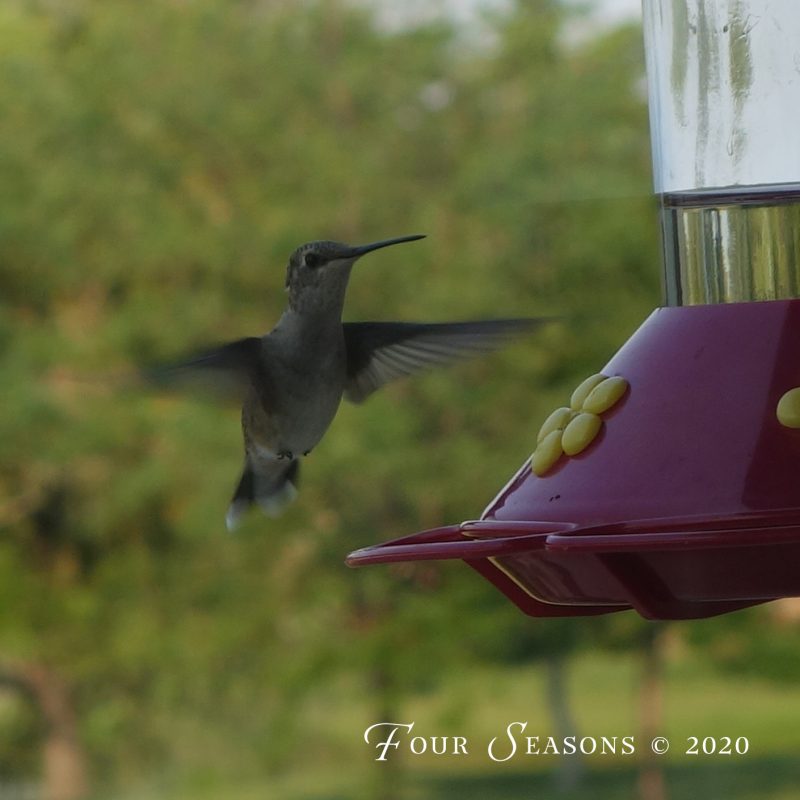We’ve been having so much fun at my house this summer watching the hummingbirds. Found all over Southwest Colorado, these little, quickly darting birds amuse and amaze us. Hang a feeder or two out, keep it filled, and you’re sure to attract them. Or you can plant a hummingbird garden and watch them in their natural habitat.
Although hummingbirds are present during some portion of the year in every part of North America, they are fairly easy to keep in your yard in our area. They thrive in residential areas where they nest and obtain their food in yards and gardens.
If you choose to plant a hummingbird garden, there are a few things to keep in mind. A mature hummingbird garden takes some planning and patience on the part of the gardener and it can sometimes be a matter of trial and error to see which plants will attract the certain types of birds in your area. They are hugely attracted to red or orange and that is a color that is widely found in annuals and perennials. Typical plants that are good choices produce multiple flowers in open inflorescences- meaning the flowers are on the outside of the plant, positioned where the birds can feed from them without hitting their wings against the foliage. Annuals with trumpet shaped flowers like petunias, scarlet sage/salvia, nasturtiums, or lantana are easy to grow and colorful. Perennials like zauschneria, columbines, foxglove, or lupines all do well here and can be hummingbird magnets. Vines like trumpet vine, honeysuckle, and scarlet runner bean are good choices as well.
You should also provide a hummingbird feeder in order to provide supplemental food for your birds. This is important as even flowers with the longest blooming times may not be able to fully furnish all the needs of your flock. In my yard they’ve got voracious appetites and my two large feeders are emptied daily even though flowers are plentiful. One of the things we like best about the feeders though is the fact that they hang right outside of our kitchen table, so they bring these amazing little birds into view for quite the show during lunch and dinner. Once you begin to feed them, be sure to continue until the season ends and they leave our area. Don’t attract them to your yard only to leave them without a food source. Hummingbirds ingest half their body weight in food each day and for this reason alone a reliable food source is necessary. If you want to make your own nectar, a simple recipe is one cup of table sugar to four cups of water. Mix well and fill your feeder. If your feeder isn’t large enough, extra nectar can be stored in the fridge.
Although flowers are the magnets there are also some other elements that should be present in the garden in order to help attract and retain them. A water source such as a birdbath or even a clay saucer filled with water near their favorite plants is helpful. Abundant sunlight is a must, both for the hummingbirds and for the flowers they need to feed on. Provide some shelter by having the garden in a protected area or planting a windbreak around it. The trees and shrubs keep the wind down and also provide nesting places. Hummingbirds will also nest in vines, but generally prefer places that are higher up and out of reach of predators. Since they are so small and their nests are so small, they are easy prey if not located in a safe spot.
We’ve had a ball watching our entertaining little friends this summer. If you’ve never tried to attract them, I encourage you to do so either by hanging a feeder or planting a garden. Even a pot of colorful annuals on the porch is often enough to do the job because they are so prolific in this area. As they dive, circle, land to eat, and fuss among themselves, they put on quite the show!

